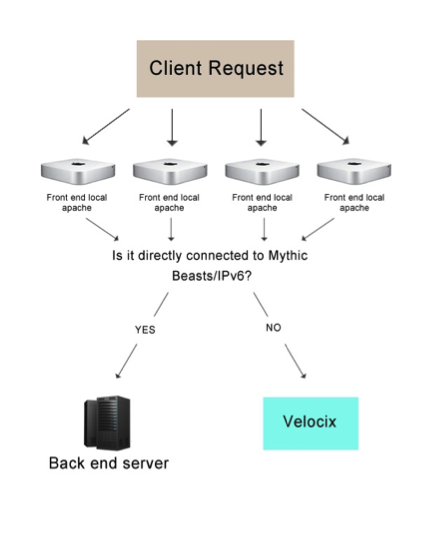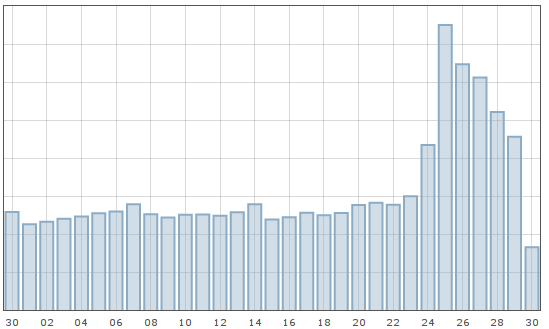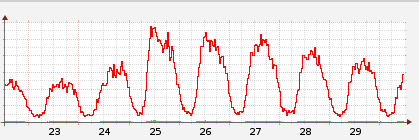|
Intel has come up with its own take of a smartwatch at the CES event. The smartwatch won't be tied to any particular operating system or devices in that it has its own connectivity. Another positive aspect of the Intel smartwatch that its CEO Brian Krzanich harped on is the 'geo fencing' attribute that it incorporates. This can keep a tab on the movements of the user and is also designed to issue warning signal once the user has stepped out of the personalized zone. This no doubt can lead to the creation of all sorts of applications that the smartwatch can be subjected to. Off late, Intel has been paying more attention to carve out a niche for itself in the smart mobile connected devices segment, an area where it has ceded ground to the likes of Nvidia or Qualcomm. While it is yet to attain a position of strength in the tablet or smartphone segment even though a start has been made, what is good to see is that it is aiming further diversification in the smaller smart personal wearable segment as well. Towards this, the company has already revealed smart headset and smart ear buds earlier at the event. The chipmaker has also revealed it new found fondness for the Android operating system, having unveiled a chip that can dual boot both Windows and the Google OS while also allowing the user to switch between either OS by just a switch of a button. Perhaps a tacit acceptance of the fact that the world is more obsessed with Android right now while Windows is suffering from a serious erosion of its user base given the phenomenal increase in usage of smartphones and tablet device which itself has given rise to an entire set of accessories centered around them. The smartwatches or bands are just the beginning.
Intel Reveals Smartwatch Prototype at the CES is a post from: E-Reader News |
A Semi-automated Technology Roundup Provided by Linebaugh Public Library IT Staff | techblog.linebaugh.org
Monday, January 6, 2014
Intel Reveals Smartwatch Prototype at the CES
Kindle for iOS Updated – Flashcards for Students
|
Amazon tends to release a slew of new programming enhancements when they release a new e-reader or tablets. Most of these new features never find their way to the official Amazon apps for iOS, but today we see something very relevant for students released, Flash Cards. Flash Cards came bundled on the Kindle Paperwhite 2 and the new HDX tablets. It basically allows you to compile a list of text within an eBook or eTextbook. Amazon has brought over Flash Cards to the iPhone, iPad and iPod Touch today in a new update, but it only works for digital textbooks only. Amazon has also enhanced the searching procedure for textbooks too. The searching aspect in print replica textbooks is now faster and more powerful. Search terms based on the words in the book are suggested to students as they type. Results are almost instantaneous. Students will love the speed and convenience. Although students received the bulk of the love in this new update, casual book readers also got some new features. At the bottom of the page you can switch between real page numbers and percentage of the book read. Readers who want to go deeper into the story will appreciate the updated experience. X-Ray characters and terms can now be sorted by relevance, alphabetically, or in order of appearance in the book. The dictionary has also received a facelift and looks really good for those of us using iOS 7. Kindle for iOS Updated – Flashcards for Students is a post from: E-Reader News |
Increase usage and checkouts with a device raffle
| Do you know anyone who didn't get the dream tablet they wanted for the holidays? Well, whether they were naughty or nice, perhaps your library can make their dreams come true with a device raffle. Holding a device raffle is a great way to increase interest and encourage first-time users to give your digital collection a try. Many libraries have found success in the past with running a device raffle and we've now created formal instructions and materials to give you the resources to host your own.
Download the Device Raffle zip folder to see more in-depth instructions. While on the Partner Portal, take a look around at the other marketing ideas and materials. We sure hope your New Year's resolution is to promote your digital collection more!
Cassie Renner is a Marketing Specialist with OverDrive.
|
URL: http://feedproxy.google.com/~r/OverdrivesDigitalLibraryBlog/~3/lbT9lE8h1x0/
New Pebble Steel Features Metal and Gorilla Glass Build, Likely to Cost $240
|
Pebble has a slightly upmarket solution to its basic smartwatches which might be affordable, but have also been accused of being too plasticky. The Pebble Steel comes in both brushed and matte black version and a Gorilla glass cover to add extra rigidity. Pebble CEO Eric Migicovsky has already confirmed they have something special up their sleeves which they intend to reveal at the CES, and Pebble Steel could well be it. Also, the Pebble Steel is expected to cost around $240, which if true will make it about a $100 more than the normal plastic versions. The basic waterproofing quality is expected to be retained as well. The smartwatch is likely to hit showrooms by the end of this month.
New Pebble Steel Features Metal and Gorilla Glass Build, Likely to Cost $240 is a post from: E-Reader News |
Nvidia Shows Off Its Next Gen Tegra K1 Chip
|
Nvidia is showing off a new chip (its fifth gen) at the ongoing CES event, one that they refer to as Tegra K1. The name breaks the company's usual convention, which perhaps is a way to drive home the point of the amazing capabilities of the new chip, which the US chip maker claims is even better than that of the Xbox 360 and PlayStation 3. That much processing power in a mobile device will no doubt make for an amazing proposition though unfortunately, the reality provides for mixed results. The new Tegra K1 features 192 GPU cores, a healthy jump over the 72 graphic cores on the current Tegra 4 chip. Company sources also maintained that the chip will be launched in 2 variants, a 32 bit quad core A15 chip along with a dual core 64 bit Denver CPU. The chip is manufactured using TSMC's 28 nm HPM process which is the same that is used to manufacture the Qualcomm Snapdragon 800 chip. However, the tech bits aside, the company also demoed a few custom built Tegra Note 7 tablet devices based on the Tegra K1 chip. The tablets ran custom Unreal Engine 4 build of Trine, Digital Ira real time face rendering demo, and Serious Sam 3. However, while the tablet had the Digital Ira real time face rendering demo with the Tegra K1, the same can't be said of the chip when it came to game playing. While this is understandable considering it’s still very much a work in progress, what the Nvidia team has to keep in mind is that a refined gaming experience is just as vital as advanced multimedia functionality.
Nvidia Shows Off Its Next Gen Tegra K1 Chip is a post from: E-Reader News |
MetaWatch Launches New Premium Smartwatch Offering Designed by Ex-Vertu Designer
|
This year's edition of CES is expected to carry a heavy dose of smartwatch news and offerings have already started to flow. MetaWatch has come up with its Meta line of smartwatches which promises to up the style quotient without sacrificing on substance. The Meta is also the first smartwatch that has evolved out of the joint collaboration between MetaWatch and smartphone designer Frank Nuovo who has earlier been associated with Vertu and Nokia. While looks can be subjective, the Meta smartwatches feature a stainless steel build enclosing a rectangular watch body with leather straps holding on to the watch via pivotal joints. There will be quite a few choices with the colors of the wrist band as well as the watch face. The screen is essentially an e-paper display with high resolution that allows for easy reading even in direct sunlight conditions. Also, the other inherent benefits of e-paper include a low affinity for battery drain while also being always on. As for its functionality, while the details are yet to be made public, MetaWatch did mention the Meta watch line-up confirms to the company's “Art of the Glance” theme. Users will be saved from having to glance at their smartphone each time there is a new call or notification. Instead, a glance at the smartwatch worn around the wrist can work wonders. Actual shipment schedule or pricing isn’t available, but we expect it to hit streets around spring. The Meta shouldn't be expected to come cheap either.
MetaWatch Launches New Premium Smartwatch Offering Designed by Ex-Vertu Designer is a post from: E-Reader News |
Coping with Christmas – a guest post from our web hosts at Mythic Beasts
| Liz: Here’s a guest post from Pete Stevens at Mythic Beasts, our brilliant hosts. Christmas this year saw…a LOT of traffic, with thousands and thousands of downloads of NOOBS and other images from our downloads page, alongside pageviews in the many hundreds of thousands on the rest of the website – this on a day when we were expecting you all to be ignoring the internet and socialising with your families. Here’s how Mythic made everything work seamlessly. Thanks Pete, Liam et al! In our last guest post we explained how we’d expanded out the Raspberry Pi hosting setup to cope with denial of service attacks. Since then we’ve done some more work to support NOOBS and cope with a traffic load that’s a bit larger than the main Internet Exchange in Leeds, and a bit smaller than the one in Manchester. The story starts in July with some updates to support NOOBS Lite. NOOBS Our existing mirror setup wasn’t really suitable for supporting NOOBS Lite. Liam Fraser has written explaining why, and, after a bit of discussion, we came up with an alternative. The new plan allowed the coordinated release of the software and all dependent files to every server, but involved some careful decision-making when it came to the serving process. We came up with these possible configurations:
We were anxious to avoid option #4. I gave Liam a quick specification to implement a redirector. Here it is in pseudo-code: if (mode=Velocix) { redirect to velocix}; if (mode=Mythic} { serve file}; if (mode=Mixed} { if (ipv6) { serve file; } else if (in the list of networks directly connected to Mythic) { serve file }; else { redirect to velocix;} } I also gave him some code that would query our routers and build the list of directly connected networks, e.g. 86.128.0.0/10 British Telecom (4 million customers) 86.0.0.0/11 Virgin Media (2 million customers) 82.0.0.0/11 Virgin Media (2 million customers) 31.64.0.0/11 Everything Everywhere (2 million customers) …and another 107,000 entries which would be too long to put in this blog post. Liam created a VM for the new downloads service and implemented it exactly as specified. We started testing this code – and then this happened: There were two problems (aside from the Liz's obviously unreasonable expectation that Liam had to finish everything before he went to university). [Liz interjects: Pete is joking. Liam is a superb multitasker.] Firstly, the code that worked out where to redirect to wasn't particularly fast, and was running on a little single core VM. This caused a bottleneck. Secondly, we were using the service from Velocix designed for large files, so we issued a redirect to Velocix, they issued a redirect to the closest cluster of theirs and then the file was delivered. All well and good. But for the small files, the redirects consumed more bandwidth and latency than the CDN saved so using the CDN slowed down the service. The result was that the NOOBS menu came up very slowly – painfully slowly if the mode was set to Velocix. Oops! So we came up with a new plan, and simplified, it looked something like this: Put into words: we installed a local webserver on each of the load balancers which had a full copy of all the downloads. We next wrote some Apache config dictating that if the file was less than 1MB in size we’d just serve it immediately (taking out the series of redirects and improving the performance). If it was larger than 1MB, we’d then consult our code to work out the best way of serving it. Lastly, we moved the redirector to the load balancers which gave an upgrade from a single-core VM to four dual-core servers, each with a 1Gbps upstream. (Obviously, at this point the comments are going to fill up with lectures on how stupid we are for using Apache instead of ngnix, lighttpd, node.js, IIS, thttpd, $insert_webserver_of_choice etc. We’ve chosen to stick with apache because it made writing the setup easy, and the bottleneck was the network card in each machine, not the CPU load from Apache.) The next trick, once we had enough capacity out of the hosting cluster, was to make sure we had enough capacity out to the internet. Mythic Beasts upgraded their London Internet Exchange upload rate to 2x10Gbps, and we sat back and waited. On Christmas Eve the traffic levels started rising. Raspberry Pi went 50% over their previous record thanks to the new release of NOOBs v1.3.3, and, we assume, parents setting up Pis ready for the next day. The following morning, this happened (see if you can guess without looking at the legend which day is Christmas):
On Christmas Day we all sat back with dinner, a glass of something and the odd glance at the graphs and Twitter, happy that all the new Raspberry Pi users had a seamless experience and the last six months of work and upgrades had been worth the time we'd put in. [Liz interjects again: I also spent Christmas Day checking the graphs and Twitter occasionally. The open mouth that the data occasioned made for terrific brussels sprouts target practice for everyone else.] You can follow @Mythic_Beasts and @FraserLiam on Twitter if you find this sort of thing as interesting as we do. (And if you haven’t already worked out how to follow @Raspberry_Pi by now, you really should be doing.) |
Smashwords, Wattpad See Increase in Use
 Photo courtesy of ebookbotics.com In the past year, open reading platform and forum Wattpad saw an exponential increase in user traffic, evidenced by the more than 41 billion minutes that its members spent reading online in 2013, more than double the use of the year before. Coincidentally, in a year spent collaborating with other platforms to form new connections and new opportunities for authors, ebook distributor and self-publishing platform Smashwords also saw a 45% increase in titles published to the site. For both companies, it demonstrates that the initial predictions that self-publishing was a fad are proving to not be true. "We've redefined what it means to be a reader by empowering a new generation to read, create and shape the stories that matter to them, all from their mobile devices," said Allen Lau, Wattpad Co-Founder and CEO. "We've seen major growth in 2013 thanks to the incredibly active Wattpad community. We expect an even bigger year ahead, and ultimately, a future where millions of original stories are created every day." Wattpad released other interesting statistics, such as the fact that 85 percent of user time is spent accessing Wattpad from a mobile phone or tablet. In other related news, fan fiction continued to thrive on the site, with 7.5 million new works of fan fiction started in 2013. Smashwords’ CEO Mark Coker has already released his end of the year blog post, along with his predictions for 2014, but has also promised that new features are coming for the self-publishing platform this year. Coker has hinted that those features will include more author control, a concept that company has already initiated with its recently revamped website. The upcoming changes, in Coker’s words, are designed to give authors an even greater advantage in the publishing marketplace, a promise that Smashwords has already made good on with the inclusion of their catalog in the Oyster and Scribd ebook subscription services.
Smashwords, Wattpad See Increase in Use is a post from: E-Reader News |
Things Looking Up for Lonely Planet
|
For one publisher, though, the past year of uncertainty is starting to look up. Lonely Planet, whose market share for guidebooks is on the rise, also saw a more than seventeen percent increase in profit over the course of 2013. While this increase occurred while the brand was still owned by BBC as opposed to its current owner NC2, expectations are good for the trend to continue. One of the difficulties a publisher of this type of material faces is that sales of its product genre are directly tied to the economic fluctuations its customer base faces. As unemployment and fiscal concerns take over, consumers tend to spend less on guidebooks for vacations they cannot imagine taking in this economic climate. Lonely Planet has felt these effects, having to lay off staff over the course of the past year and enduring reports that BBC called its acquisition of the brand a mistake. Fortunately, reports from within the company show that dozens of new positions have been created in recent months, showing that the publisher is seeing an upturn in readership and profit.
Things Looking Up for Lonely Planet is a post from: E-Reader News |

![IMG_0215[1]](http://goodereader.s3.amazonaws.com/blog/uploads/images/IMG_02151-576x1024.png)









